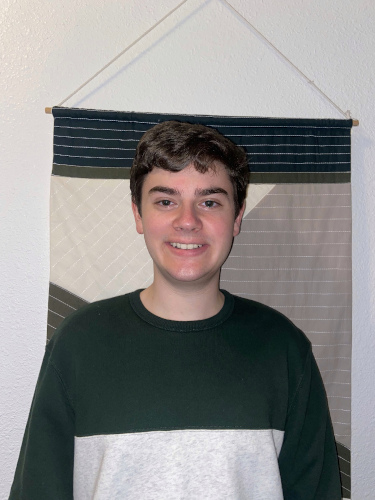Current Students
Our current interest in the lab is to optimize our calmodulin-based hydrogel for in situ drug delivery applications. To that end, experimental efforts in the 2021-2022 academic year will focus on two main areas: increasing the solubility of the M13 component of the hydrogel and covalent modification of the calmodulin component of the hydrogel with mock drug via a hydrolysable linkage.
Hydrogel Solubility Challenge:
The M13 component of our copolymeric hydrogel, PCLP3, has poor solubility in water. To improve its solubility, we intend to explore two primary strategies.

Project 1: Co-expression of PCLP3 and Calmodulin in a Bacterial Expression System.
Mario Garcia Romo
Motivation: Since calmodulin is very soluble in water and has high affinity for M13 in the presence of calcium, we expect that the solubility of PCLP3 of will be improved in the presence of calmodulin.
Strategy: We will co-transform an E.coli expression cell line with two plasmids, one that expresses PCLP3 and another that expresses calmodulin.
Our goals are to demonstrate 1) creation of the co-transformed cell line, 2) co-expression of the proteins of the correct molecular weight, and 3) increase in the solubility of the PCLP3 protein in the presence of calmodulin.


Project 2: Effect of Co-solvents and Ionic Liquids on the Water Solubility of PCLP3.
Anna Grace Boyd and Jerrian Reedy
Motivation: Chaotropic agents, benign co-solvents and Ionic Liquids will be tested to discover their effect on the overall solubility of PCLP3 and their effect on the interactions between PCLP3 and CCLP3, the other copolymeric component of the hydrogel.
Strategy: A microcuvette assay will be used to measure the kinetics of precipitation PCLP3 as a function of solution conditions. Alternatively, a microdialysis assay will be to monitor the condition-dependent solubilization of PCPL3. These measurements can also be performed in the presence of calmodulin as a comparative study to Project 1.
Hydrogel Drug Delivery Challenge:
Covalently modify the calmodulin component of the hydrogel (CCLP3) with mock drug via a hydrolysable linkage.
Project: Recent studies in the lab demonstrated the success of covalent modification of -SH groups with maleimides. We want to explore specific chemistries including 1) Traut’s reagent to increase the number of -SH groups, and 2) revisit earlier successes with “Click” chemistries.
Bailey Taylor and Mac Dulaney


Special Interest Project: Exploring the Effect of Diabetes Mellitus on Vision (May 2022)
This research paper will explain and present the ways in which the disease Diabetes Mellitus causes blindness. It will also explore the increasing prevalence of this disease, as well as the prevalence of its blindness causing cofactor Diabetic Retinopathy. The cellular impact of Diabetes and the effect it has on the cellular components of the eye and its vision systems, will be explained through research. Also explored will be the stages of the disease Diabetic Retinopathy, and how this disease rapidly worsens in cases of unregulated blood glucose levels. The ideas presented in this paper will be gathered through primary and secondary literature in a library-based research project.
Tripp Magee
